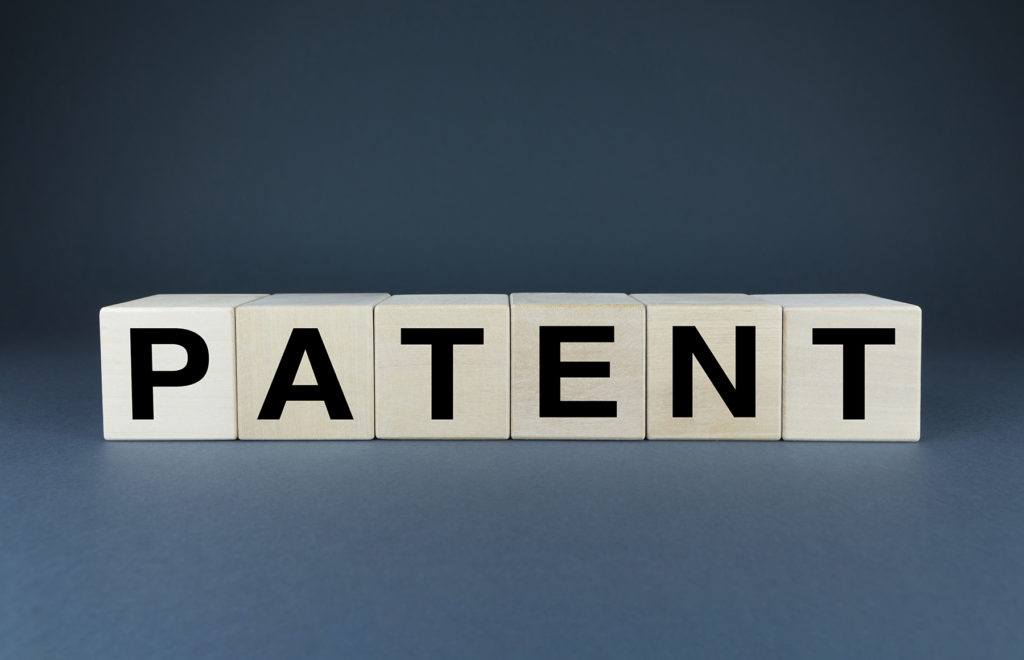As modern technological advancements continue to emerge and develop, questions about patents abound.
A patent is an exclusive right granted for a product or invention. Although applying for a patent is relatively easy, getting one can take time and effort.
According to the United States Patent and Trademark Office, over 646,244 patent applications were turned in in the year 2020 alone. Of those, roughly 388,900—around 50 percent—were granted.
To that end, entrepreneurs, inventors, and business owners must understand the complexities of patents.
This guide includes everything you need to know about patents, including modern-day patent examples.
What is a Patent?

When inventors create a new product—and wish to retain sole ownership—they must apply for a patent.
A patent is a legal document that grants exclusive rights for a given product or process to a single individual or company.
Only a sovereign entity—such as a government—can provide patents, and the patent then gives the inventor exclusive rights to the product over a given amount of time.
In exchange, the inventor must file a patent application, rendering the information about the product public.
Multiple types of patents exist for various products; each application has specific stipulations and requirements.
Most patents are valid for 20 years in the United States, after which an inventor must apply to extend terms if needed.
Intellectual property rights differ by country, so keep this in mind when conducting your research.
Who Can Apply for a Patent?
Patents are a uniquely democratic concept, and they are available to anyone who, according to the USPTO, invents or discovers the new machine, image, or composition of matter. Additionally, patents are granted to those who work on improving current procedures or products as long as they are responsible for innovating new solutions.
As a result, anyone can apply for a patent in the United States.
Who Awards Patents?
In most countries worldwide, patents are awarded by governing bodies.
In the United States, the U.S. Patent and Trademark Office manages patent applications and grants. The U.S. Patent and Trademark Office is part of the Department of Commerce and a governmental agency.
To receive a patent, inventors must disclose the process of creating the product and making it public.
As of April 2023, the U.S. Patent and Trademark Office has awarded over 10 million patents.
Types of Patents

Although innumerable processes and products may require patents, the United States has three main categories of patents.
The three types of patents are utility, design, and plant. Consider the following to learn more about these three types of patents.
Utility Patents
Utility patents, also called patents for innovation, provide legal protection to those who invent or discover a unique and valuable process, machine, article of manufacture, or composition of matter.
According to the U.S. Patent and Trademark Office, utility patents are the most common type of patent, representing nearly 90% of patent applications.
Utility patents typically last for 20 years, but inventors may apply to extend this period if necessary.
Utility patents also require maintenance fees for upkeep, or they risk being invalidated.
Utility Patent Example
Utility patents include products owned by Apple and software owned by IBM. Apple currently holds 2,000 patents, and IBM owns nearly 9,000.
Design Patents
Design patents represent intellectual property rights granted to inventors for original, new, and ornamental designs for manufactured products and machines.
Design patents are explicitly granted for designs only, so they do not apply to process inventions. The invention must be entirely original and provide some use to society.
Design patents last only 15 years as of May 2015, and maintenance fees do not apply.
Design Patent Example
Design patents include furniture designs owned by Ikea, art by Basquiat, and Manolo Blahnik shoes.
Plant Patents
Plant patents are the most uncommon type of patent.
They are awarded to those who produce, discover, or invent a new type of plant capable of reproduction.
They allow companies to innovate in biology without infringement from other companies.
Plant patents typically extend up to 20 years from the date of filing and require no maintenance fees for upkeep.
Plant Patent Example
There are patents for a new species of African violet, almond trees, and the Orgundy chrysanthemum flower.
Figures and Statistics
There are over 500,000 patent applications applied annually in the United States, roughly half of which are granted.
In June 2018, the USPTO granted its ten millionth patent since its inception, many of which went to major tech and software development corporations.
Apple, for example, owns over 2,000 patents.
How to Apply for a Patent
The process for applying for a patent is relatively simple. Follow the steps below to learn more about patent applications.
- Inventors begin by working on their inventions and documenting the process.
- They must then confirm with the USPTO that their patent idea is original and does not infringe upon another person’s intellectual property.
- To qualify, patents must be commercially viable.
- Most inventors choose to hire patent attorneys to address potential disputes.
- They first submit a provisional patent application and await confirmation.
- They file their patent applications with the USPTO, disclosing the product creation process.
- They maintain communication with the USPTO while awaiting approval.
Once the patent is granted, individuals and companies can begin to sell and market the products.
Remember that a patent must be entirely original and commercially viable to be legitimate, so it is best to do ample research before filing a patent application.
Modern-Day Examples of Patents
There are many examples of patents throughout modern history.
For example, in 1930, Philo Taylor Farnsworth was awarded a patent for television, as he was responsible for creating the first television set.
Apple owns patents for touchscreen fingerprinting technology, biometric sports headgear, augmented reality glasses, and self-adjusted intelligent watch straps.
Patent law is a notoriously complex field, as there is much debate about what constitutes an invention.
As a result, there have been several landmark patent cases that are worth mentioning.
Myriad Genomic Patents
Over 20 years ago, the bioengineering firm Myriad Genetics announced that it had sequenced the BRCA1 gene, a genetic mutation contributing to breast and ovarian cancers.
Later, the company discovered a second gene responsible for these cancers, BRCA2. The company filed patents for both genes and began selling heredity tests to allow people to find the prevalence of BRCA1 and BRCA2 in their DNA.
The company was later sued by a group of plaintiffs claiming that DNA cannot be patented.
The court determined that although DNA cannot be patented, the processes responsible for discovering such genetic mutations can.
Nanotechnology Patents
Nanotechnology is a field in which tiny amounts of matter ranging from 1 to 10 nanometers are manipulated to produce phenomena.
With the commercialization of nanotechnology products, the question of patenting such products becomes particularly salient.
Many argue that affording patents in such an unexplored field could allow singular corporations to monopolize quantum engineering, restricting competition.
Additionally, it isn’t clear whether patents can be applied to matter that is discovered rather than created.
Patents vs. Trademarks vs. Copyrights
Intellectual property rights extend across three major areas: patents, trademarks, and copyrights.
Patents are legal rights granted to inventors for their products or processes, and they extend up to 20 years, excluding others from reproducing the products.
Trademarks, conversely, consist of legal protections on words, phrases, designs, or drawings that identify a product or service. A brand boosts a company’s valuation, and they are protected forever.
Common examples of trademarks include the Nike swoosh and Apple’s signature logo.
Lastly, copyrights consist of legal protections awarded to original works of authorship. This category typically encompasses art, writing, literature, choreography, and software.
Copyrights are granted for a maximum of 70 years from the author’s death.
Frequently Asked Questions
Consider the answers to our most frequently asked questions to learn more about patents.
What are the three types of patents?
There are utility patents, design patents, and plant patents.
What is an example of a patent?
Examples of patents include Alexander Graham Bell’s invention of the telephone and the Wright brothers’ invention of the airplane.
What cannot be patented?
According to the USPTO, inventors that threaten the well-being of the public are not eligible for patents.
So, What is a Patent?
Simply put, a patent is a form of legal protection that allows inventors to maintain sole ownership and benefit from their inventions.
While patents come in many different forms, they all function in much the same way. The three types of patents are utility, design, and plant.
If you apply for a patent, make sure your creation is helpful, unique, and original. Remember to do your research ahead of time to ensure originality.






















